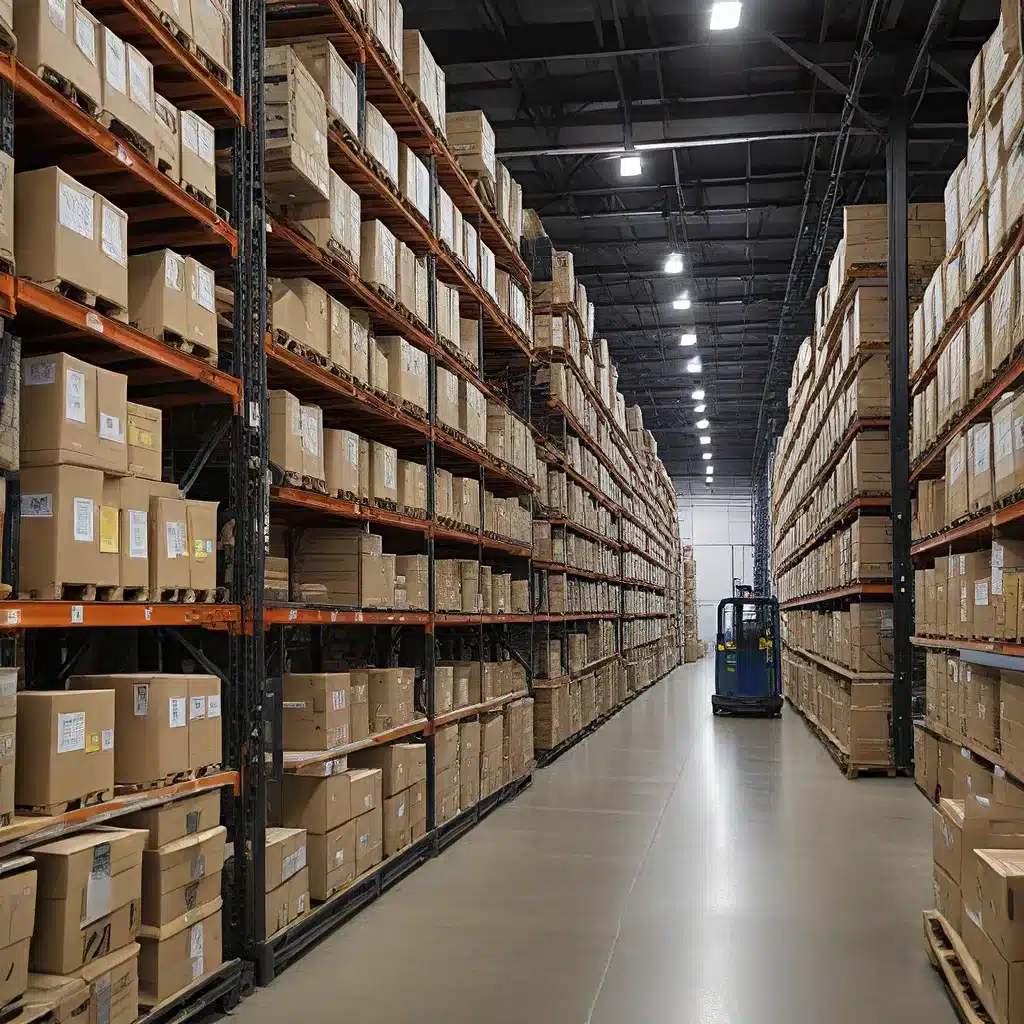
In today’s fast-paced and globalized economy, the cold chain has become a critical component in the safe and efficient delivery of temperature-sensitive products, such as perishable foods, pharmaceuticals, and medical supplies. This intricate network of temperature-controlled environments and processes ensures that these vital goods maintain their quality, safety, and shelf life throughout their journey from production to consumption.
However, managing the cold chain presents a unique set of challenges. Factors such as varying environmental conditions, transportation logistics, and supply chain visibility can all contribute to temperature deviations that can compromise the integrity of these temperature-sensitive products. Such deviations can lead to spoilage, loss of nutritional value, and the risk of pathogen growth, posing significant health and safety risks to consumers and patients.
Enhancing Cold Chain Visibility with Sensor-Enabled RFID
To address these challenges, the integration of sensor-enabled RFID (Radio Frequency Identification) technology has emerged as a game-changing solution for enhancing cold chain visibility and traceability. By combining the power of RFID with advanced sensor capabilities, businesses can now monitor and track the temperature conditions of their products throughout the entire supply chain.
RFID technology uses electromagnetic fields to automatically identify and track tags attached to objects, enabling real-time visibility into the location and status of shipments. When coupled with sensors that can measure and record temperature, humidity, and other critical environmental factors, this technology becomes a powerful tool for proactive cold chain management.
The advantages of incorporating sensor-enabled RFID into cold chain operations are numerous:
-
Automation: RFID technology enables automated data capture and monitoring of temperature-sensitive goods, reducing the need for manual temperature checks and data entry, thereby saving time and labor costs.
-
Accuracy: RFID-based temperature monitoring provides accurate, real-time data, allowing for the immediate detection of temperature deviations or excursions, which is crucial for preventing spoilage or damage to perishable goods and ensuring compliance with regulatory requirements.
-
Efficiency: By improving visibility, traceability, and control over temperature-sensitive shipments, RFID technology streamlines cold chain operations, enabling faster decision-making, proactive intervention, and the optimization of processes, leading to increased efficiency and productivity.
-
Cost Savings: Minimizing temperature-related losses, optimizing inventory management, and reducing manual labor requirements can all contribute to significant cost savings for businesses operating in the cold chain.
Sensor-Enabled RFID in Action: The Cold Chain Monitoring System
A typical sensor-enabled RFID system for cold chain monitoring consists of a few key components:
-
RFID Tags: These tags are attached to the temperature-sensitive products or containers, containing unique identification information and sensor capabilities to monitor environmental conditions.
-
RFID Readers: Strategically placed at various points along the supply chain, these readers wirelessly capture the data from the RFID tags, providing real-time visibility into the location and status of the shipments.
-
Monitoring System: The data collected from the sensor-enabled RFID tags is processed and analyzed by a monitoring system or software platform, which provides operators with a comprehensive view of the environmental conditions throughout the cold chain.
This monitoring system plays a crucial role in early detection of temperature excursions, allowing for proactive intervention to address issues before they escalate and cause significant damage to the temperature-sensitive products. By continuously monitoring temperature conditions, the system can alert operators to potential problems, enabling them to take corrective actions, such as adjusting refrigeration settings, rerouting shipments, or implementing other measures to mitigate the risk of product spoilage or degradation.
Enhancing Product Quality, Safety, and Compliance
The implementation of sensor-enabled RFID technology in the cold chain has a direct impact on the quality, safety, and compliance of temperature-sensitive products. By maintaining consistent temperature control throughout the supply chain, businesses can ensure that their products are always kept within the required temperature range, reducing the risk of spoilage, contamination, or degradation.
This not only preserves the quality and freshness of perishable goods, such as fresh produce, dairy, and frozen foods, but also safeguards the efficacy and safety of pharmaceutical and medical products. Strict regulatory bodies, such as food safety authorities and pharmaceutical regulators, impose guidelines and standards for the handling and transportation of these temperature-sensitive products. Compliance with these regulations is essential to avoid potential legal consequences and ensure public health and safety.
Improving Operational Efficiency and Cost Savings
In addition to the quality and safety benefits, sensor-enabled RFID technology can also enhance the operational efficiency of cold chain management. By automating temperature monitoring and data collection processes, these systems can reduce the need for manual intervention, leading to improved resource utilization and cost savings for businesses.
For example, by minimizing temperature-related losses, optimizing inventory management, and reducing labor-intensive tasks, companies can see a significant return on investment through the implementation of sensor-enabled RFID technology. This, in turn, can contribute to the overall financial performance and competitiveness of businesses operating in the cold chain industry.
The Future of the Connected Cold Chain
As the demand for temperature-sensitive products continues to grow, the importance of maintaining a robust and reliable cold chain will only become more critical. The integration of sensor-enabled RFID technology represents a transformative step towards achieving end-to-end visibility and control over the cold chain, empowering businesses to optimize their operations, enhance product quality and safety, and ensure regulatory compliance.
By leveraging the power of connectivity and real-time data analysis, the cold chain of the future will be increasingly automated, agile, and resilient, capable of adapting to the evolving needs of consumers and the ever-changing regulatory landscape. As the sensor networks and IoT (Internet of Things) continue to shape the future of supply chain management, the sensor-enabled cold chain will undoubtedly play a crucial role in securing the integrity and availability of temperature-sensitive goods across industries.
Embrace the transformative potential of sensor-enabled RFID technology and unlock the true power of the connected cold chain today. Discover how sensor networks and IoT can revolutionize your supply chain operations and drive sustainable growth in the years to come.